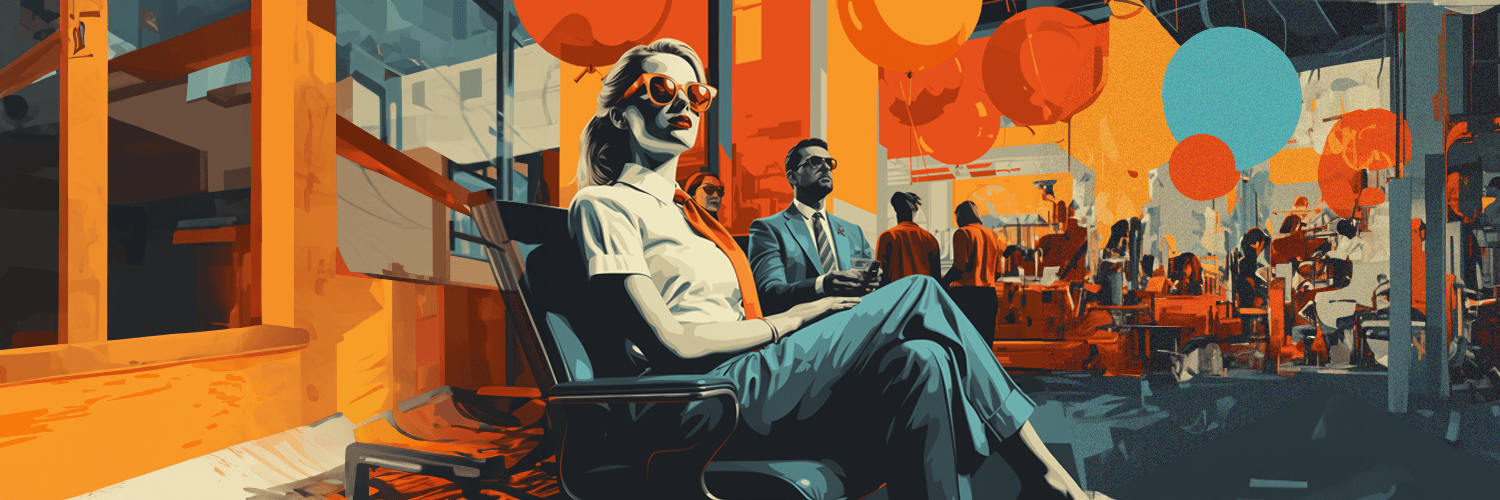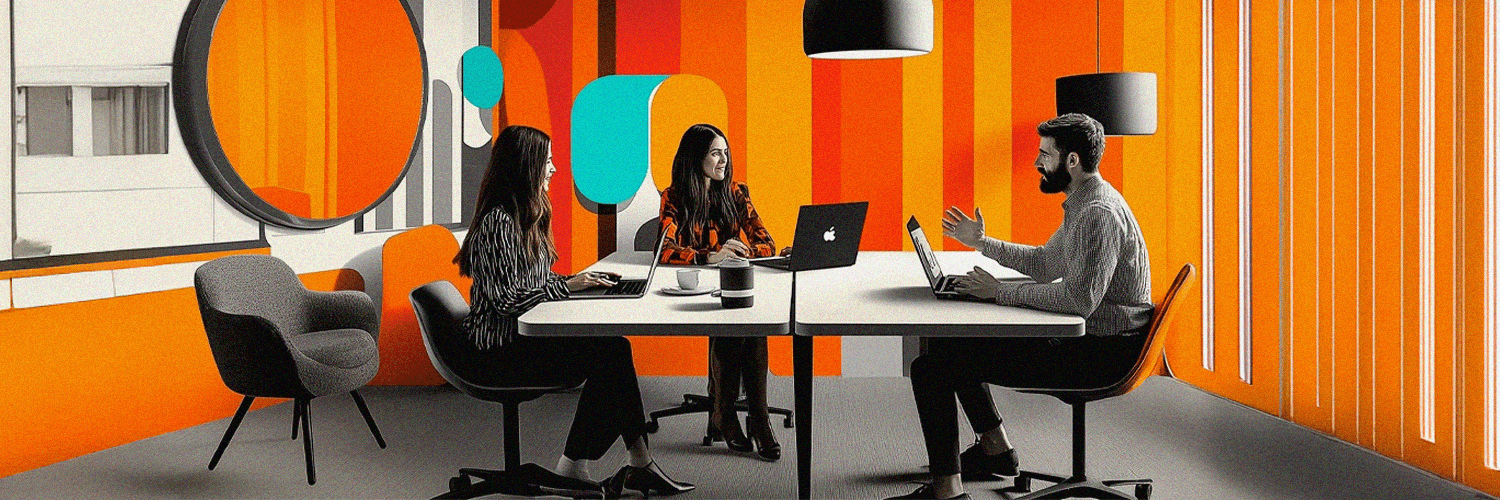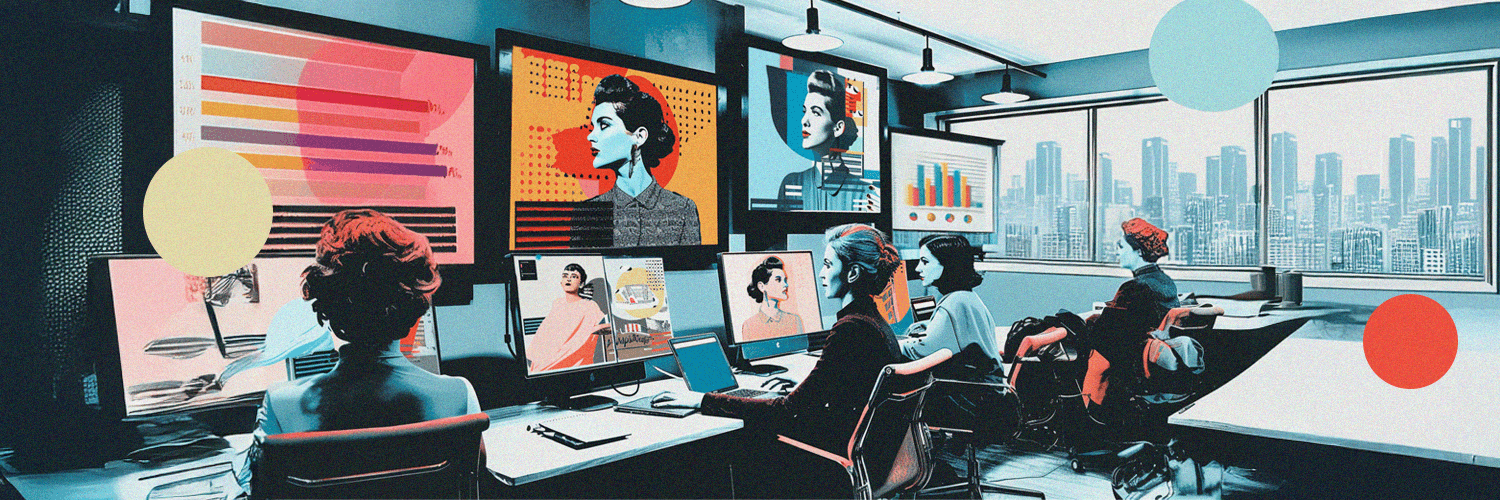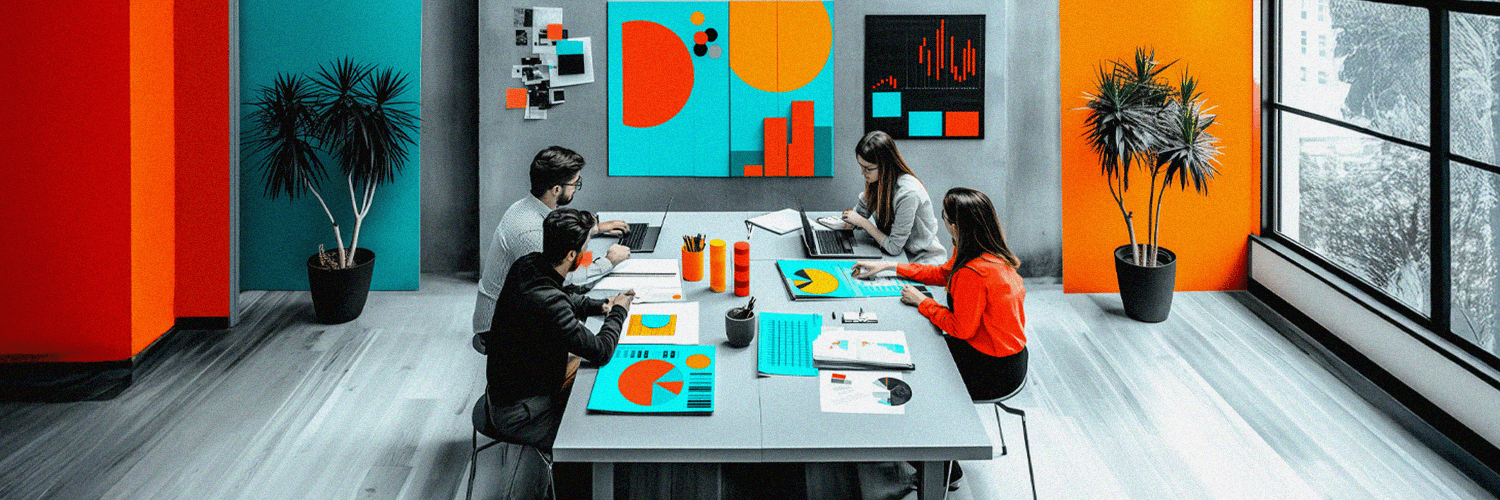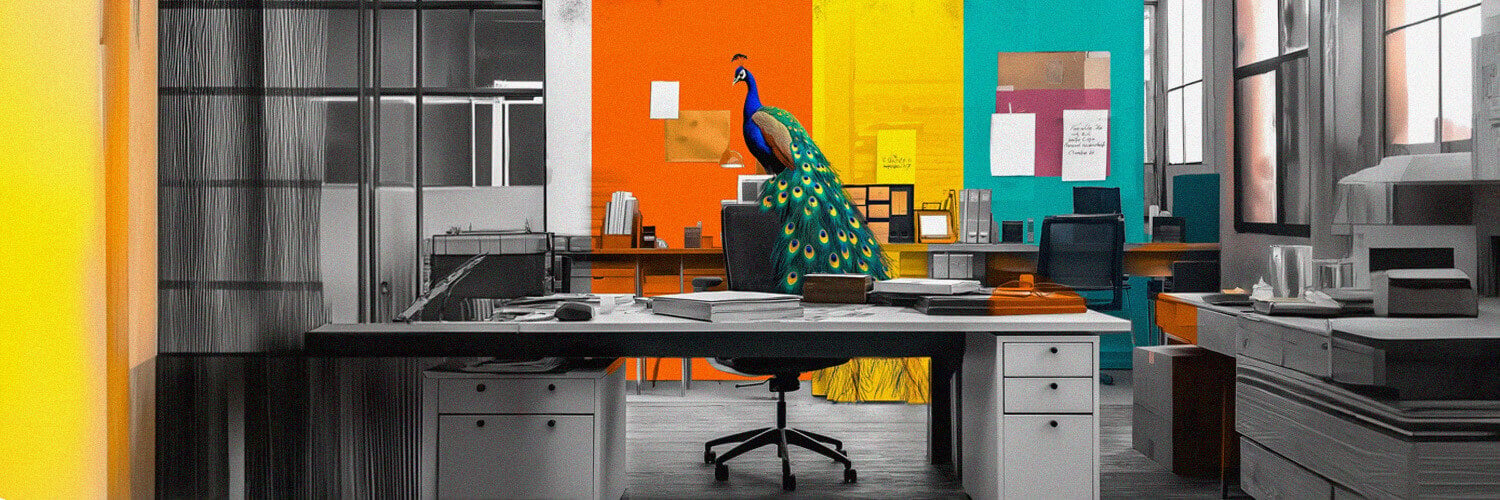To attract and retain top talent for the long haul you’ll want to (constantly) improve the workplace experience.
But this is the strategy adopted by all the organizations you’re competing against for the very same talent.
How do you stand out?
You redefine your workplace experience strategy through the lens of a hospitality mindset.
And in this article, you’ll learn exactly:
- What workplace hospitality is
- Why you’ll want to take a cue from hospitality when you’re (re)shaping your workplace experience (with clear benefits)
- How to bring hospitality into the workplace ( i.e how to create a hospitality-driven workplace)
Let’s dive right in.
TL;DR:
- To stand out in attracting and retaining top talent, organizations should adopt a hospitality mindset to reshape workplace experiences.
- Workplace hospitality involves viewing employees as valued guests, and prioritizing service, comfort, and convenience.
- Benefits include fostering a sense of belonging, attracting and retaining talent, and building a stronger brand reputation.
- Implementing workplace hospitality involves focusing on people, spaces, technology, and service.
- Key components include a company culture prioritizing employee well-being, creating a conducive workspace, and leveraging technology for a seamless experience.
- The future of workplace hospitality includes aesthetically designed offices, widespread adoption of hospitality practices, and an infusion of hospitality-driven talent.
- Adopting a hospitality-driven mindset is crucial for creating a worthwhile workplace experience and staying competitive in attracting and retaining talent.
Understanding Workplace Hospitality
What Is Workplace Hospitality?
Workplace hospitality is viewing your employees as valued guests. Not just as staff.
With a focus on service, comfort, and convenience. For both your employees and your visitors.
But this is a very sketchy definition of the concept of “hospitality at work”. That only scratches the surface of what workplace hospitality entails.
Cause work hospitality comes down to adopting a customer service mindset when (re)designing your workplace experience.
Once the workplace experience is created through the lenses of hospitality/customer service, you manage to create an environment where both your guests and your employees feel supported, welcomed, and well taken care of.
Workplace hospitality is ultimately a… mindset: your guests and employees feel welcome and comfortable when they come into the office space.
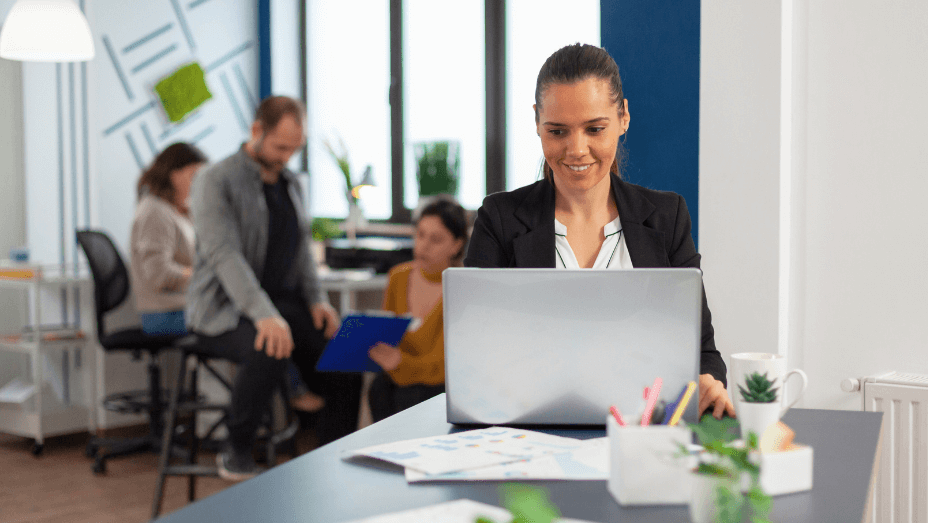
Benefits of Hospitality-Driven Workplace
Why would you want to incorporate a hospitality culture into your workplace experience management?
In other words, let’s talk clear benefits of bringing a hospitality mindset into your workplace.
It Creates a Sense of Belonging and Community
“Why would I want to work in the office when I can carry out the same tasks in… many other places?”
The most powerful response you can give to your hybrid employees is given by the very opportunities for connection and engagement that you’ll create for them in the workplace.
It’s those meaningful interactions that you’ll facilitate at work that will foster that sense of belonging to a community that will get your employees to come to the office.
How do you facilitate those meaningful interactions?
By redefining your workplace ecosystem as a:
- comfortable
- welcoming
- engaging
… destination
In short, by drawing inspiration from hospitality and prioritizing the human experience itself.
It Helps You Better Attract Talent and Retain Your Best Employees
From:
- the very first impression: an engaging arrival space, where new candidates are greeted with a “How may I help you?” or a friendly “Hi!”, where employees can grab a cup of coffee, pre-order their meals or check the events happening that day
- to all the other spaces in the office building focused on the employee experience: the well-lit workspaces, the meditation rooms, the wellness centers
- to the technology put at their disposal that streamlines their most tedious, repetitive tasks and grants them more time to get creative, to interact
- to all the hospitality-led initiatives you’ll take to create memorable experiences at work
… these will all translate into a stronger employer brand.
And a higher employee loyalty level.
It Helps You Build a Stronger Brand Reputation
Happy employees make your most valuable brand ambassadors.
And adopting a hospitality mindset to tap into brand perception and integration opportunities like:
-
Turning each digital touchpoint into an opportunity for a brand impression
-
Turning every day at the office into an opportunity for an immersive brand experience and team/community gathering
-
Turning the time spent in the reception area, itself, into an… memorable experience in itself, one that embodies your company’s brand
… helps you build a stronger brand reputation and a desirable workplace.
3 Key Components of Workplace Hospitality
How do you implement a culture of workplace hospitality into your organization?
You focus on the 3 main components of a solid workplace experience strategy: people, spaces, and technology.
Then you add the fourth component, too: service.
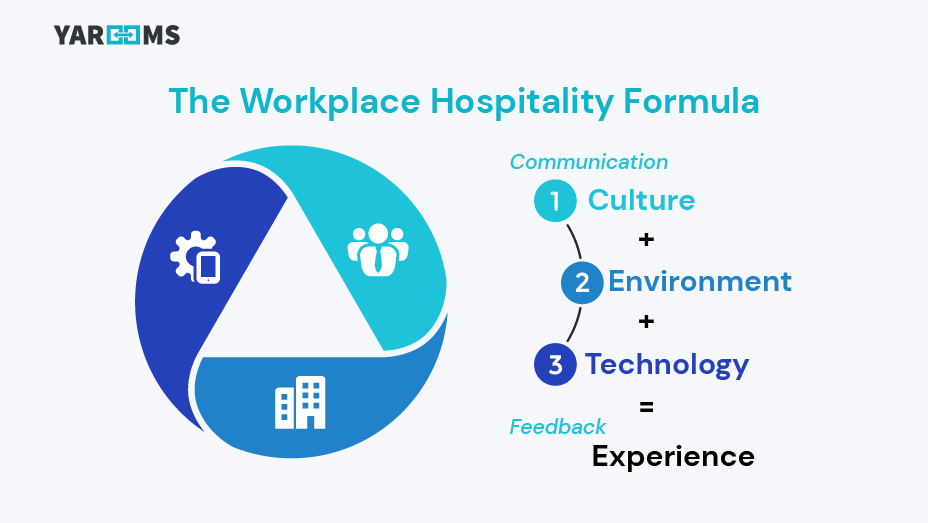
The workplace hospitality formula
People: Company Culture Is a Crucial Aspect of Hospitality in the Workplace
The (not so) secret component of any healthy hospitality-led workplace is the people.
It’s the employees who need to feel valued, supported, respected, and trusted. And well attended to. Just like the customers of a five-star hotel.
By creating a company culture that prioritizes:
- employee well-being
- autonomy
- open communication
- a healthy work-life balance
- employee development
… you create a sense of belonging, comfort, and safety that work hospitality is all about.
Spaces: An Ecosystem That Enables People to Do Their Best Work
What is a (truly) hospitality-driven workspace experience?
One created with a big focus on how space affects people.
- How does it influence their sense of belonging to a work community?
- How does it influence the way they feel about their work?
- To what extent do they feel that their unique needs are being met? For focus, for connection with their colleagues, for comfort, and collaboration?
… And one created with the help of the employees. That’s tailored so that space and sensory stimuli meet their specific needs.
In this respect, in the context of a workspace experience centered around a hospitality culture, we’re talking about a workplace ecosystem.
One made of several different spaces where people can gather, meditate/recharge, collaborate, do deep-focus work, do teamwork, innovate, and learn:
- Well-designed meeting areas where employees can collaborate
- Comfortable spaces that emulate “third places” (e.g. cafes and coffee shops) that people love to work from nowadays – with different options for focus, comfortable couches and chairs, and maybe a rather residential decor
- Office spaces designed for one-on-one or individual work
- Shared versatile office spaces with soft seating, resembling those you’d find in a hotel lobby
- Massage chairs and meditation rooms, part of a wellness suite
- Workspaces featuring appropriate lightning, height-adjustable chairs, and balanced acoustics, amenities aimed at making the employees feel as comfortable, welcome, and… respected
- Office design focused on warming up the space, with a mix of wood and other natural elements, greenery, and warm tones
In short, an ecosystem that serves the different needs of all the different employees in your organization.
Service: Creating Meaningful Interactions and the Sense of Belonging
How do you create hospitality in the workplace?
You turn it into a comfortable, welcoming, and engaging destination for your employees. Which becomes particularly important in a hybrid work environment.
… Into a welcoming and accommodating environment for all your guests coming in. Into an enjoyable (not to say “memorable”) experience for anyone coming to your office.
And this is where the “service quality” component, specific to the hospitality industry, comes in.
Here are 3 service strategies you can “steal” from hospitality, adapt to your own needs and incorporate into your workplace experience strategy:
Deliver a great “first impression”: once in the reception area, allow your employees and visitors to set their expectations and anticipate their needs for the day.
With alerts informing them which of their colleagues will be in the office that day, the option to pre-order their lunch meals right then and there and maybe to scan through all the events happening in the building that day, and, overall, with a welcoming arrival space where they can just sit, decompress, and plan out their workdays, you make them feel attended to as well as in any hospitality setting.
The reception area is also the space in your office where visitors check in, ask for extra info and get greeted. Make sure their experience there is as smooth as possible (e.g. setting up a digital reception device that’ll scan their QR code is just one example that you care for their needs; that you respect their time).
Create unique, personalized (local) experiences at work: think beyond ping pong table perks and “casual Friday”. Think farmer's markets, exhibitions, and pop-ups once or several times a week. Experiences that keep the workplace alive, engaging, and stimulating.
Create personalized visitor experiences by meeting any special requirements that visitors can enter when they pre-register
Facilitate meaningful engagements: consider putting together your own community experience team representing your company’s brand commitment to bring hospitality at work. They’d be the ones in charge of making anyone coming to your office feel welcomed and well taken care of the moment they step in. The one informing and guiding your employees towards choosing the best resources within that work community, the events in the agenda that best suit their needs and preferences, etc.

Technology: Digital Workplace Experience to Connect and Engage
The right workplace technology helps your employees and visitors:
-
free up valuable time for connection
-
engage in meaningful meetings/gatherings with their co-workers even in a remote or hybrid work environment
And here are 4 examples of using technology to create a hospitality-driven workplace experience:
Invest in easy-to-use technology that connects your employees: that enables your team members – irrespective of the work model they work in – to meet virtually, participate in events, and, overall, create equitable experiences in a hybrid workplace.
Start perceiving every digital touchpoint as an opportunity for engagement, whether that means alleviating certain pain points, or an opportunity for connection. While your employees streamline their time-consuming, repetitive tasks and gain more time for connection and innovation, you get to turn the data and feedback collected into valuable insights on space usage and employee preferences.
Adopt technology that streamlines every little aspect of an employee’s work day: from room or desk booking to office resource booking – parking spaces, certain conference or video calls rooms, chargers, etc. – to food ordering and booking personalized tools that help them do their best work.
Leverage visitor experience technologies like QR code scanning or facial recognition to help guests coming to your office save valuable time with their check-in and… feel welcome and well attended to
Implement a visitor management system that allows visitors to pre-register and enter any special requirements they might have. This way they can enjoy a truly personalized experience when they come to your office.
Technology to Support Hospitality in the Workplace: 4 Examples
Speaking of integrating workplace technology to make your employees’ lives easier at work and help them do their best work, here are 4 tech solutions to consider for (re)shaping experiences at work.
Visitor Management Systems
Infuse hospitality into the whole office visitor experience and boost operational efficiency in your office with a visitor management system.
And here YAROOMS – the complete workplace experience platform offering a visitor management solution, too– stands out as one of your best options.
Here’s why:
- It streamlines the entire pre-registration and check-in process: Your host employees can pre-register office guests in the system, with staff at the front desk receiving the guests’ details. At the same time, the latter can register themselves upon arrival via a digital reception app.
- It alerts the host employees upon their expected guests’ arrival.
- It gives you access to visitor management analytics – from employee host information to data on visitor traffic on specific dates – that you can use to improve front-desk operations and allocate resources… the optimized way.
Digital Room Signage
Another way to create hospitality at work and level up the workplace experience with the help of the right technology is by offering both your employees and your office visitors access to an easy-to-use digital room signage app.
One that gives them access to real-time information on:
- Which meeting or conference rooms are booked
- Which ones are available
- When scheduled meetings are due to take place
Plus, YAROOMS goes even further and grants your employees and office guests a room panel for meeting room display that makes it so easy for them to:
- Book a room on the spot, right at the door, with just a few taps
- Extend or end their reservations, if needed, again, with just a few simple taps
And it grants you access to office room utilization insights that’ll help you better optimize your space and better serve your employees’ needs.
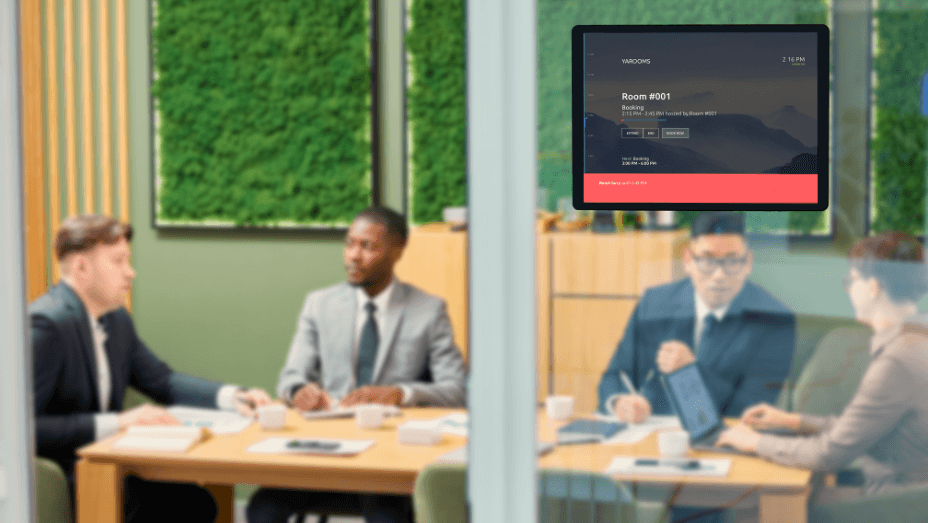
Interactive Office Maps & Wayfinding
Workplace hospitality comes down to offering your employees (and office guests) the smoothest experience possible.
And this is where YAROOMS interactive maps come in to… enhance the workplace experience. As they enable your staff to:
- select floors and specific locations in the office building
- select a convenient date and time for their room or desk reservations
- check present and future space availability in real-time
- look for rooms or office desks that meet their more specific requirements: to be seated next to a particular colleague or to book a room that features specific equipment they need to do their (best) work
- book a room on the spot
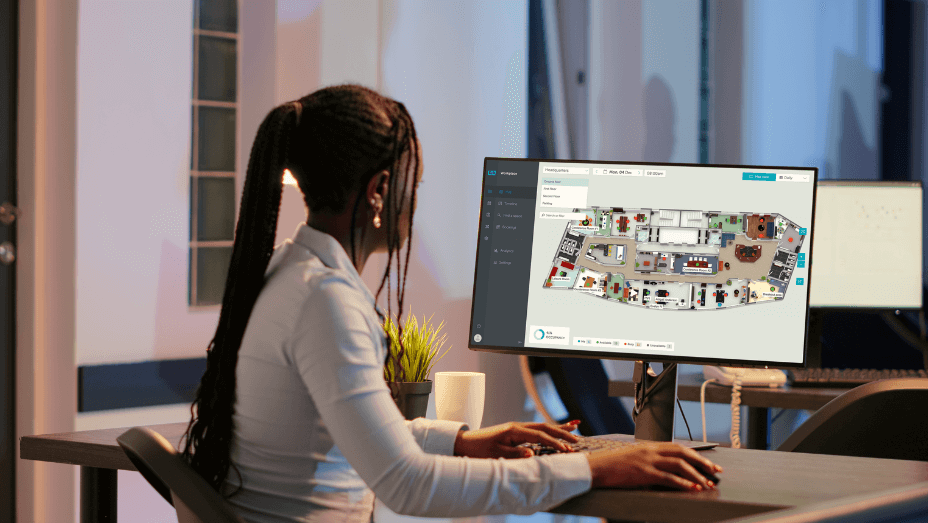
Flexible Space Booking Solutions
Technology-driven work hospitality is all about enabling employee flexibility.
And a desk booking software like YAROOMS, enables employees to:
- check availability and book free desks, rooms, parking lots, seats in larger rooms, and different space amenities on the go
- choose between the option to book space/amenities for full days, for specific predefined intervals, or for custom times
- navigate an interactive floor map and use advanced search functions to personalize their selections and, along with them, their future workplace experiences: they can choose to be seated next to certain colleagues or to look for a desk in a specific room (or in a certain corner of a room), at a specific floor in the building, etc.
But let’s talk about real-life examples, shall we?
Like the one of Mercury Insurance, the Los Angeles-based company, that started using YAROOMS as a workspace management solution needed to meet their most stringent needs:
- To ensure a smooth “back to office” experience for their team members in the context where they reduced the no. of available office desks
- To customize the desk reservation system so that it can be used via Microsoft teams
And here are some of the key results they’ve been enjoying since using YAROOMS:
- All Mercury Insurance employees can now find and book, on their own, both the desks – located in specific areas of the building – and the equipment they need for their scheduled workdays
- Their Facility Management team gets access to valuable usage analytics that helps them work areas cleaned and sanitized after usage
- The company now enjoys improved workplace hospitality, fostering a productive and collaborative atmosphere as employees seamlessly navigate their workspaces and facilities.
Strategies for Continuous Improvement in Workplace Hospitality
Leadership Commitment
Building and, even more challengingly, maintaining a healthy hospitality culture in the workplace depends a lot on the support of leaders in the organization.
In this context, leadership commitment means:
- Clear, visible initiatives turned into action to constantly enhance the employee experience. From the workplace technology implemented to the hospitality-inspired workplace design
- Communicating this priority through the mission statement and vision publicly shared
- Connecting workplace hospitality – the goal of making employees feel welcomed, safe, supported, and well taken care of at work – to the company values and practices
- Assigning new responsibilities and resources (e.g. building a community experience team with proven hospitality skills)
Employee Training Programs
From something as basic as greeting everyone entering the office building with “Hello! How may I help you?” to more “advanced” ways of engaging visitors and employees, these are hospitality-driven skills that can be learned.
And training your frontline employees to create hospitality in the very way they engage with potential new candidates coming to your workplace, with business partners, and with other employees becomes a critical step you’ll want to take.
Inclusive Policies and Practices
A truly hospitality-driven workplace experience has to be inclusive. As a baseline, not as an afterthought.
In this respect, you'll want to implement inclusive policies and practices so that everyone – those who are differently abled and neurodiverse, too – should feel welcome and comfortable in the workplace.
That they belong to that work community, and that they’re supported to do their best work.
Feedback Mechanisms
How do you identify areas that need improvement?
Maybe your visitor experience could be further enhanced.
In this case, a short guest survey is but one of the many feedback mechanisms you can set up.
Or maybe your office amenities booking system could be improved.
Or maybe your office design doesn’t serve the needs of all the different types of employees you have. With different needs.
From one-on-one, in-person meetings to performance reviews, employee surveys, and group discussions, you’ll want to identify and implement the feedback systems that work for you.
And to regularly assess the success of your hospitality-led workplace experience strategy.
Speaking of which…
Regular Assessments and Adjustments
Once you’ve collected valuable feedback – from both your employees and your office visitors – it’s time you make the right improvements to your hospitality-at-work strategy.
Implement new workplace technology that’ll better enhance the employee or visitor experience.
Or lose the one that doesn’t doesn’t seem to suit their needs.
Tweak your policies and procedures aimed to create hospitality at your workplace.
Implement new programs aimed at training your employees. Or programs that support well-being and happiness at work.
In short, this is the step where you turn the data you’ve collected by now into valuable insights.
… Then into concrete adjustments to your hospitality-inspired strategy for improving employee and visitor experience.
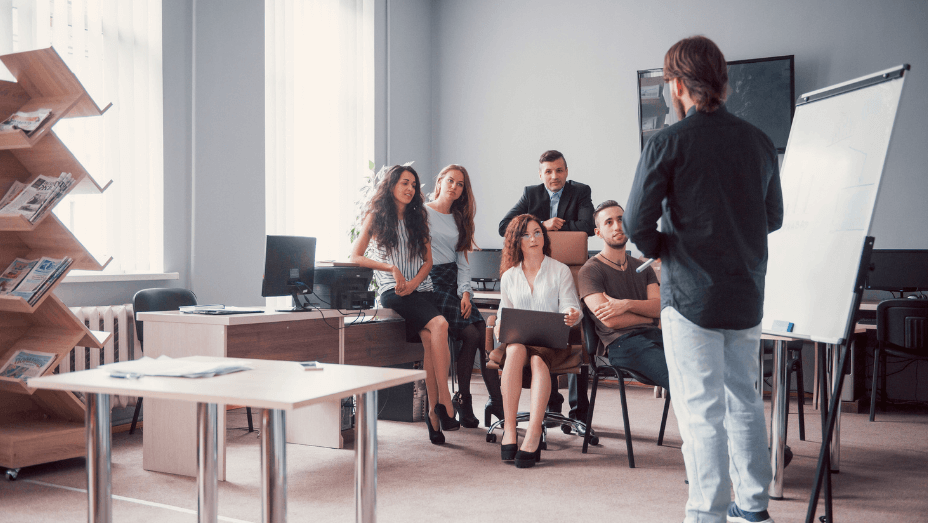
The Future of Workplace Hospitality
What will the future of workplace hospitality look like in… 5 years, let’s say?
First of all, we’ll witness the emergence of a more hospitality-style aesthetics in office design and decor.
With meticulously designed spaces to ensure that external guests feel welcome and valued. And where internal guests (employees):
- can perform at their best
- are happy and satisfied with their jobs
- feel in control to use the space as it best suits them
- feel that they belong to the community they find there
Secondly, we’ll witness more and more organizations adopt hospitality practices to get their employees – now perceived as valued guests – through their office doors. And help them reconnect with the workplace community there.
Last but surely not least, we’ll witness an infusion of hospitality-driven talent in an increasing number of organizations.
With a growing focus on hospitality-inspired personal interaction and on building back company brands as they manifest themselves in the workplace, the client-facing teams will get an infusion of professionals with strong hospitality skills.
Final Thoughts and Takeaways
Acknowledge the need for change in your office space and the experiences delivered there.
… Before you rush in to put all these tips on hospitality in the workplace into action.
Because you’ll want to make commuting back to the office worthwhile.
In this respect, looking at the experience is essential.
And adopting a hospitality-driven mindset to creating, curating, and managing the experiences delivered in the workplace becomes the winning approach you’ll want to stick to in the years to come.
